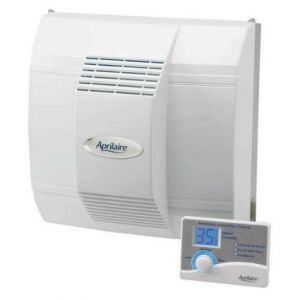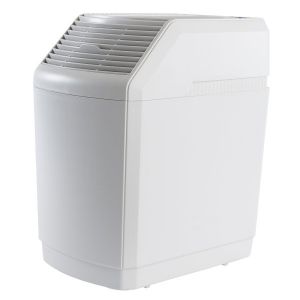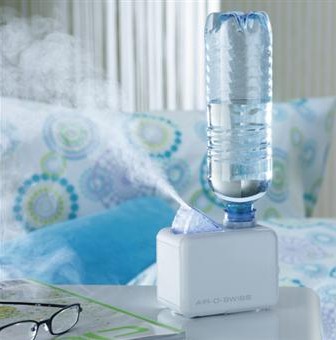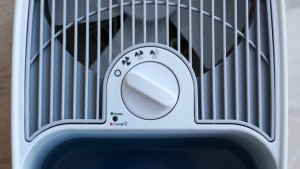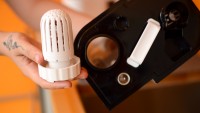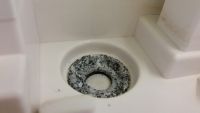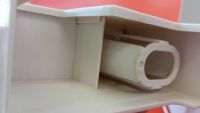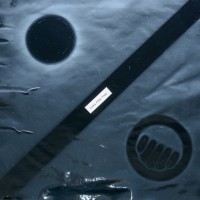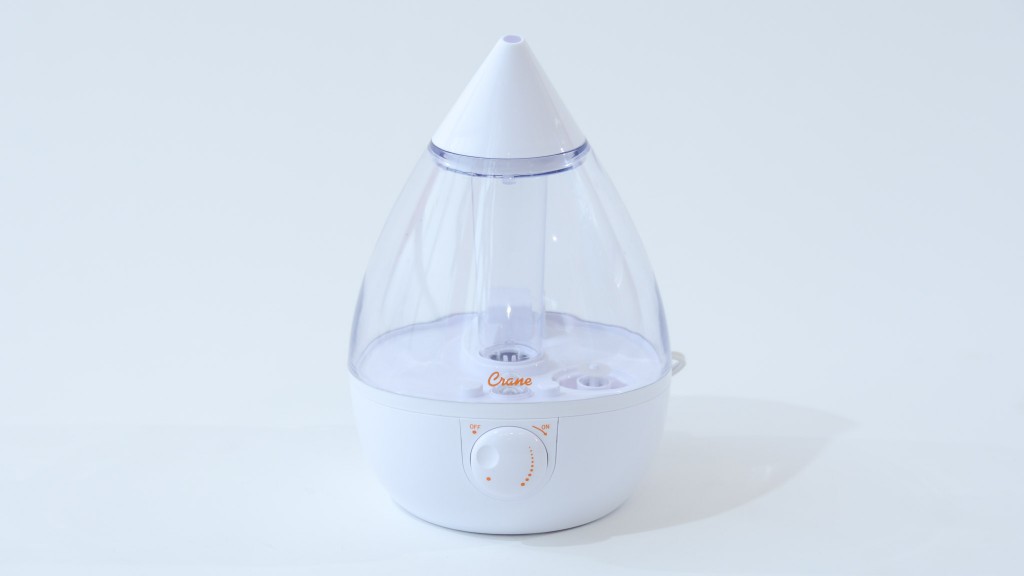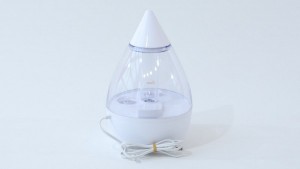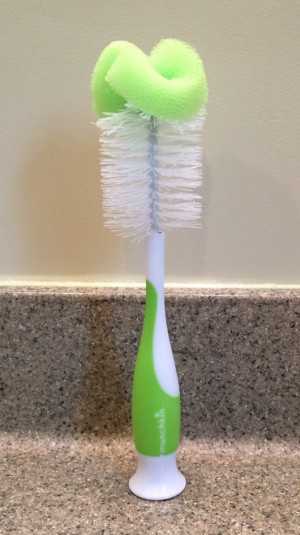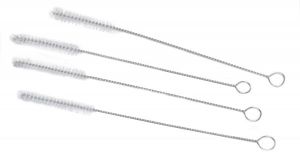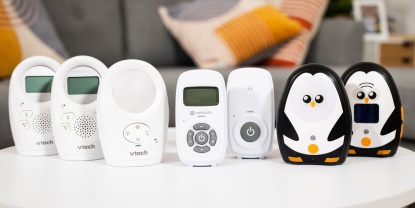Why Buy a Humidifier?
If you live in a dry climate, you may already be familiar with humidifiers. Dry air can wreak havoc on the skin and the well-being of the mucous membranes, particularly in the winter. If you live in a humid climate, you may have the opposite problem with too much moisture in the house, relying on a dehumidifier to prevent mold and mildew.
Whatever your situation may be, when your baby gets their first cold, you likely enter the complex world of humidifiers. Humidifiers can help loosen the thick and sticky mucus that accumulates in your baby's nasal passages and upper airway during an Upper Respiratory Infection. Extra moisture in the air can be the difference between being up all night with your sick little one and getting some much-needed shut-eye. In a dry climate, regular humidifier use can also help keep mucous membranes moist, which helps prevent nose bleeds and chapped lips. It is even a useful item to have if your little one develops croup.
A very dry climate can cause issues with respiratory health and general discomforts like dry eyes and skin. It can also cause problems inside the home like shrinkage of wood floors and furniture, cracked paint on wood trim, and static electricity. Alternatively, an indoor climate that is too humid can foster condensation, unwanted microbe growth, and mite infestation. How do you correctly use a humidifier to create a pleasant and healthy home? It turns out that is a loaded question. This article can help you understand how to buy a humidifier for your child's room, but more importantly, it can help you learn how to use it safely.
Safe Humidification Levels for the Home
Battles rage on between builders, physicians, and microbiologists regarding the proper indoor humidity for health and the prevention of microbial growth. A general rule of thumb is somewhere between 25 to 60%. However, outdoor air temperatures will dictate the safest spot in this range. In many parts of the U.S., this can also vary from season to season. Because understanding this information is essential if you use a humidifier in your home, we will discuss this topic before digging into the basics.
Let's start with some helpful tips for creating a pleasant and healthy home environment.
- Consider Allergies or Asthma — It is important to connect with your child's doctor before using a humidifier if your child has a history of asthma or allergies. While increasing humidity levels can often be helpful, it can also exacerbate some conditions if not used properly.
- Use a Hygrometer — A hygrometer is a handy device that measures indoor humidity. Year-round recommended indoor humidity should be between 25-60% (depending on the outdoor temperature). However, most people cannot tell the difference within this range, and this inability is why a hygrometer or simple humidity monitor is helpful. With a list price as low as $10, a hygrometer is an invaluable tool when using a humidifier. Lower-cost hygrometers may have an error rate of +/- 3-5%, but they provide adequate general information to observe household trends. We used the AcuRite Indoor Temperature and Humidity Monitor in our day-to-day testing.
Adjust Humidity Based on Outdoor Temperature — Whether you live in a climate with one season or a climate with two to four distinct seasons that fluctuate between very cold and warm, being educated and maintaining proper humidity levels within the climate home based on outdoor temperature is very important. The table below represents various dew points for common air temperature/relative humidity combinations.
Types of Humidifiers
Competing products come in various types; we'd like to give you a brief understanding of what is available. While there are products for the entire house or only a part of it, our comparative review of the best baby humidifiers focuses solely on single-room products for use in a baby's room.
Each product's output capacity determines how efficiently and effectively it can push moisture through space. Measures of room humidification are usually in square feet (sq ft). Maximum square footage for humidification can be an important factor when looking for a room unit, especially if the area you want to humidify is large. However, if you have a small nursery or only want to humidify the crib area, then the humidification area may be less critical. So, a product listed for a 500-square-foot room should easily meet humidification needs in a room with smaller square footage.
Depending on the total square footage of the area you want to humidify, a product with a high output capacity and effective mist dispersion can provide adequate moisture for more than one room or an area of your house. Although many of the products in our comparative review give an objective humidification coverage in square feet, we did not seek to determine how each company established this measurement. Instead, we consider it a general statement of output capacity rather than a guarantee that it could provide consistent humidity in specific square footage.
Central Humidifier
A central unit's purpose (below left) is to humidify an entire home. These units attach directly to a home's forced-air heating system and push moisture through the air vents to achieve an overall increase in humidity.
Console Humidifier
Console units (above right) are free-standing products designed to humidify a large portion of the home. However, they are not easily portable.
Single Room Humidifier
Single room products (above) are smaller (typically ultrasonic or evaporative, more on this below) that can increase the humidity in a room or a smaller area of your house. Single room units are particularly helpful during a respiratory illness when congestion makes it difficult for a baby to sleep. However, they can also be helpful year-round to maintain comfortable humidity levels.
Steam Vaporizer
Steam vaporizers humidify via warm mist. They use electricity to boil water until it turns into steam vapor. However, because they produce hot steam internally, they are not recommended for use with children to prevent burn injury. Many vaporizers also offer the ability to use medicinal inhalants or essential oils in a separate reservoir or on a pad and distribute them into the air during operation.
Travel Humidifiers
Travel products are nifty devices you can take with you on the go. Their size makes them easy to fit in a suitcase but also limits their effectiveness. These units are great to place on a nightstand during a hotel stay but do not offer the power or features necessary for daily, continuous use.
Cool Mist vs. Warm Mist
Another consideration is cool or warm mist output. None of the products we tested refrigerates the water before putting it into the air, so "cool" mist only means that the mist is produced using room temperature water. It will feel cool due to the evaporation that occurs as soon as the mist reaches your warm skin. Cool mist products can be more cost-effective because they do not require extra energy to run a heating element.
Warm mist models either heat the water enough to turn into steam and rise naturally or heat the water to a set temperature well below boiling before using another process such as ultrasonic vibration to push the mist into the air. Some people prefer warm mist because they find it makes the air feel less chilly, but this tends to be more of a subjective feeling than an observable temperature difference. You may appreciate a warm mist product, especially in a cold room. Most products produce cool mist, some only warm mist, and a few models can do both.
On the topic of warm mist units, a note of caution: we at BabyGearLab feel that using a true warm mist product (one that heats the water to boiling to create steam) is not a good idea when small children are involved. Boiling water around a curious baby or toddler creates a safety hazard that we don't think is worth the potential problems it could produce. Even with the options we tested that only warm the water, we recommend keeping them out of your precious little one's reach to avoid the possibility of contacting the heating element.
Ultrasonic vs Evaporative
Ultrasonic products are the current popular favorite in humidification technology. They work by vibrating a small plate at frequencies above what the human ear can hear (thus, the name ultrasonic) to break up water into tiny mist particles that float into the air. Ultrasonic units are quiet and efficient, but they produce a white dust, which you can read about below in the section on cleaning and maintenance.
Evaporative humidification is another technology that is less prevalent than it used to be. Evaporative products used to be more popular than they are today: check out this 1991 article from the New York Times when evaporative wicking products were the latest thing.
Luckily, evaporative units don't have problems with white dust, but they do have other issues. Evaporative products work by sucking air through a water-saturated wicking filter. This process requires a powerful fan (which can be noisy) and a filter with a large surface area (which requires more space than a tiny ultrasonic vibrating plate). Finally, the wicking filter on most evaporative units requires regular replacement. Evaporative wicking filters do a great job of trapping and collecting minerals from the water, so they don't go into the air. Over time, these mineral deposits prevent the filter from wicking properly and cause the product to lose effectiveness. Regular replacement of filters is part of the overall cost of these units. The Honeywell HCM-350 is the only evaporative product in this review.
Tap Water vs. Distilled or Filtered Water
Why does it matter what kind of water you use? It can make a big difference. Here's why: Tap water contains minerals like sodium and phosphorus. Water quality varies from region to region, with some areas having soft water with low mineral content, some average mineral content, and others with hard water and high mineral content. Tap water tends to deposit hard minerals within the humidifier that are difficult to remove (much like a ring in the toilet bowl). More worrisome, however, is that the hard mineral deposits become breeding grounds for the microbial growth of bacteria and fungus. Also, tap water minerals are dispersed by ultrasonic units in a fine mist into the air you breathe, and it often results in "white dust" on surfaces in the room. Remember that ultrasonic vibrating plate? Not only does it turn water into mist, but it also breaks up minerals in the water and invites them along for the ride. Although these mineral particles are tiny, research shows that they may affect respiratory health, as seen in this case study. Furthermore, no one wants the extra job of cleaning white dust from furniture and carpeting.
There are a few ways to avoid problems with minerals in tap water:
- Use a Filter — Evaporative units cannot operate without a wicking filter which requires regular replacement. Basic ultrasonic units do not require a filter for operation, but adding one is helpful in reducing white dust if you are using tap water. In turn, they also minimize mineral deposition in the product itself, which over time can be very difficult to remove and provides a breeding surface for microbial growth.
- Use distilled or filtered water — To reduce the white dust, you should use distilled water or highly filtered water from reverse osmosis or multi-stage filter system. Most manufacturers are aware of the white dust problem and encourage steps for prevention. In fact, all of the ultrasonic units we tested recommend the use of distilled or filtered water. Some manufacturers offer additional ways to reduce or avoid white dust by including a demineralization filter or offering one sold separately.
We were concerned enough about white dust that we decided to perform our own in-house white dust tests. The pictures above show a side-by-side comparison of the white dust from the Vicks Filter Free (above left), one of the most prolific white dust producers, and the dust from a less prolific producer (above center). In this test, we use hard tap water. We only used a filter if the unit had one included in the box. Some products have filterless designs. Others, like the Crane Drop and Crane Adorable, have filters available to purchase separately. Keep in mind that these photos use special lighting to capture and dramatize the amount of dust produced by each unit, making comparisons easier. To further emphasize our point, it is helpful to view the photo of an evaporative unit from a previous test group, the Honeywell HCM-350 (above right), which produces virtually no noticeable white dust due to the absence of ultrasonic vibrations.
Qualities to Look For
Choosing a unit that is not too big, not too small, works well, plus it's durable, stylish, and doesn't sound like a steam train blowing through your bedroom can be tricky. To help you with your decision, we considered the following areas:
Ease of Cleaning
For each product, we followed the manufacturer's instructions for cleaning and maintenance. For some models, this meant daily emptying and replacing the water. For other models, this meant a weekly cleaning using vinegar or bleach. Following the manufacturer's instructions will allow you to maintain your product's warranty, and it will ensure you are doing the most you can to prevent microbe growth.
Daily Maintenance
Some products explicitly call for daily emptying and refilling of the water tank and basin in the instructions. When you are using a product continuously, this is not as demanding as you'd think. We at BabyGearLab think it is best practice to perform this task daily or at least every other day no matter what it says in the instructions. If you bring the entire unit to the sink with you during refills, it only takes a few extra seconds to rinse out the base. Daily rinsing allows you to inspect the surfaces for unwanted colors (meaning microbe growth) and alerts you when the product needs a little extra TLC.
Weekly Maintenance
In addition to a daily check-up, humidifiers need a thorough cleaning once a week. Weekly cleaning can require wiping down with a cloth, cleaning parts with a small brush, and using a cleaning solution like vinegar or diluted bleach. Some products require more specialized care than others during the weekly cleaning.
Effectiveness
When considering effectiveness, it is important to look at output strength, capacity, and duration.
Output Strength
Output strength is a measure of the ability to raise and maintain humidity levels in a given space. You may not need a product with the highest output strength if your goal is to provide extra moisture to the air surrounding the crib. Some products can be too powerful for small spaces. On the other hand, a unit with weak output strength is unlikely to be able to compensate for periods of extremely dry air or provide adequate and consistent humidity to a larger area.
Capacity
Tank capacity becomes very important if you are operating it over extended time periods, such as throughout the night. A product with a small tank capacity will require extra footwork for refillings. For continuous operation, large tank capacities are ideal.
Duration
Duration is somewhat related to tank capacity and to the mist output setting. A product with a large tank capacity can operate for longer without running out of water. The ability to control mist output allows you to control duration as well. For example, if you select the highest mist output, you'll use the water in the tank quickly, and you might also encounter wet floors from the excessive mist output.
Noise
Ultrasonic units are known for being very quiet; the majority of ultrasonic units we tested have a quiet machine-type noise with occasional bubbling sounds. Evaporative products aren't as quiet as ultrasonic because they require a fan. When considering the noise level, you'll need to think about whether or not you are okay with fan noise. Some people find that the added white noise of a fan helps some babies sleep.
Ease of Use
Ease of use includes careful consideration of weight, footprint, features, and design.
Weight and Footprint
A portable product should be easy to carry from room to room and to the sink for refillings. The ideal portable humidifier should be lightweight, compact, and have a small footprint to fit on a nightstand or dresser easily. The size and shape are also important when refillings. Can the tank fit under the faucet in a kitchen sink? Will the base fit in the sink for cleaning? We found that most of the products we tested did not fit in a typical bathroom sink, and some tanks can't stand on their own.
Features
Features are extra perks in addition to the primary function. Through testing, we determined that some features are essential and some are just "nice to have." Features that give you control over moisture output are essential. If you plan to use a product over different seasons and a wide temperature range, you'll need the ability to control the humidity level in the air. The products in our test group offer this through variable mist adjusting knobs, fan speed, and the ability to self-monitor and maintain a specific humidity level using an internal hygrometer.
Features like a night light, a warm mist option, and auto shut-off timers fell into the "nice to have" category. These features can make life more comfortable and add value, but they may not be a necessity. We also encountered some features of questionable benefit.
Design
For design, we consider how a product's overall package makes it easy or not so easy to live with on a day-to-day basis. A product with a lot of extra features may be complicated to use if the controls are confusing and require extra steps to access certain functions. Similarly, a product that doesn't offer the basic functions or presents problems when attempting to use basic functions (such as a water tank that doesn't balance on its own during refills) will receive low marks for design.
Extra Features and Modes to Consider
Extra features to consider include a night light, warm mist option, and an auto shut-off timer. If you want to maintain humidity levels within a narrow range, you may want to look for a unit with an internal hygrometer.
Helpful Accessories
A few extra accessories can be very helpful in your quest to maintain a clean and functional humidifier. A bottle brush with a foam tip works well to clean tank insides. For this task, we used the Munchkin Bottle and Nipple Brush. For tiny nooks and crannies, you will want a small brush designed to fit in tight spaces. We used Dr. Brown's Natural Flow Cleaning Brushes or the brush that came with the unit (some come with a brush). Based on each product's maintenance instructions, you may also need white vinegar and bleach for weekly cleanings. Finally, if you choose an ultrasonic unit that does not come with a demineralization filter, you will want to purchase distilled water or use a filtration system to reduce the mineral content in the water. If you are using tap water, look for a filter cartridge to purchase separately.
Conclusion
After reading this article, your head may be spinning with all of the things you should consider when searching for a safe and effective humidifier for your child. Not to worry! Our tests, ratings, and individual reviews look at all of these areas for all of the products in our review. Between our buying advice and overall review, you'll be able to buy a great humidifier with confidence that it will work for your family and wallet.




